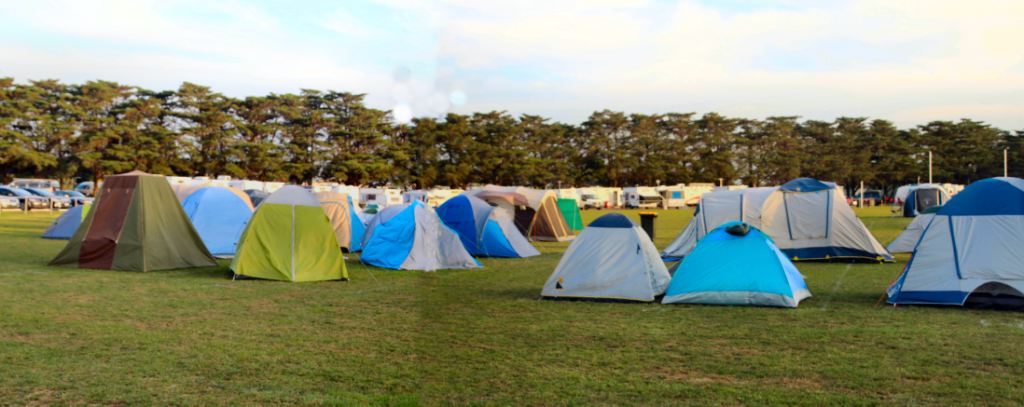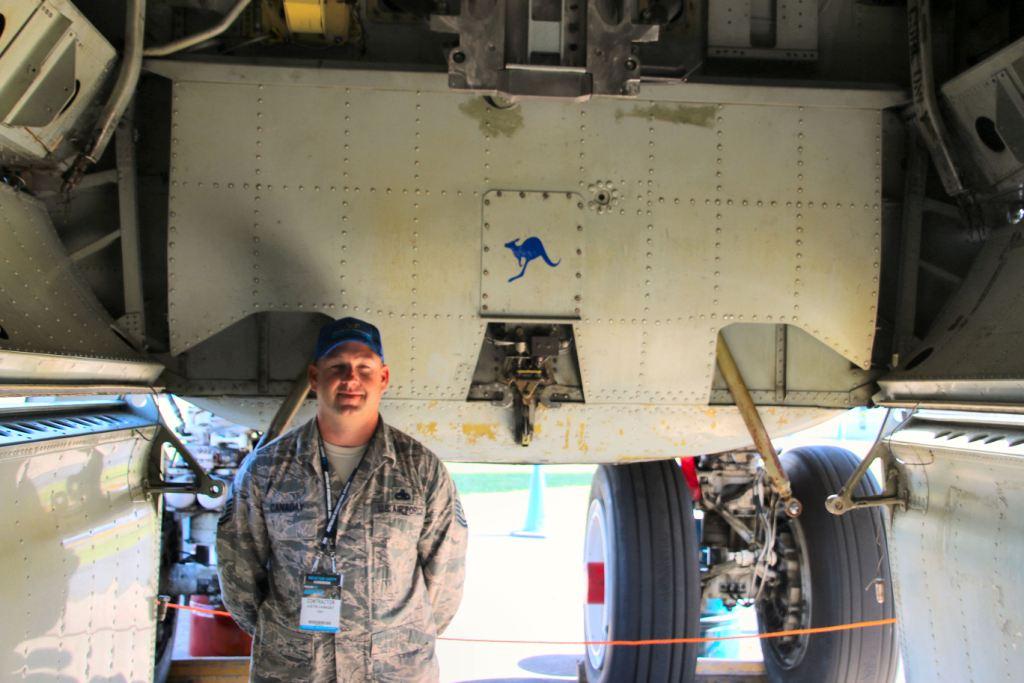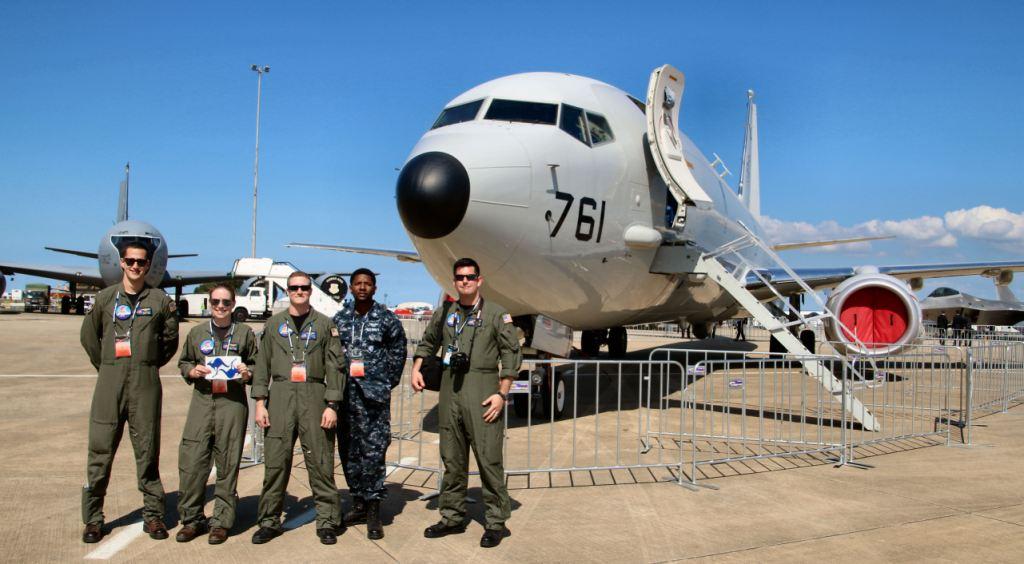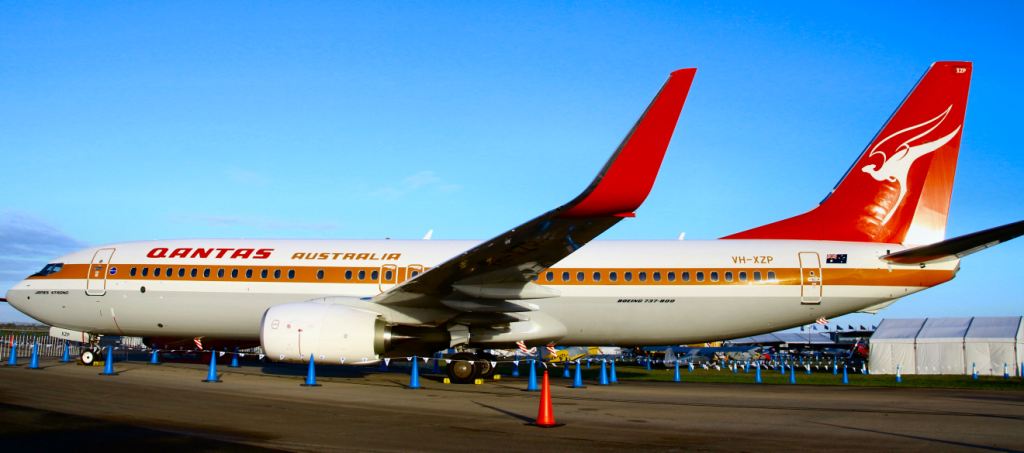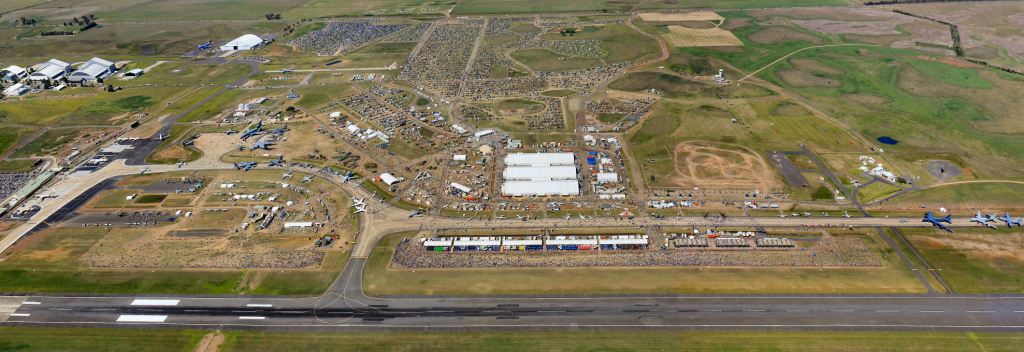|
|
||
|
||
|
Privacy Policy | Editorial Policy | Profit Policy | Join the Association | List of Members | Contact us | Index | Links |
||
|
Back Go to page: 1 2 3 4 5 6 7 8 9 10 11 12 13 14 15 16 17 18 19 20 Forward |
||
|
|
||
|
The People I meet.
|
||
|
Recently I was working at the Avalon
International Airshow and decided to pop outside for a few minutes to
grab a breather. I was just sitting on the stairs watching the aircraft
and minding my own business when three
Such is the cross those with Radtechitis have to bear.
It was a delight to meet these girls, Cpl Julia Anderson (Logistics) on the left, Cpl Sarah Morrison (Flight Steward) at the back and Sgt Sarah Anderson (Flight Steward) on the right. They were obviously enjoying life to the extreme, being attached to 40 Squadron with the New Zealand Air Force. 40 Sqn provides Fixed Wing Transport with a fleet of two Boeing 757 aircraft. Their tasks include the deployment and transportation of personnel and equipment in support of NZDF exercises, VIP transport, aeromedical evacuation and rapid response support to humanitarian assistance and disaster relief operations.
The RNZAF acquired its two Boeing 757-200 aircraft to replace its aging Boeing 727’s in 2003. Starting in 2007 both aircraft were fitted with an upper deck cargo door to facilitate an 11-pallet cargo capability, internal air stairs, upgraded engines and flight deck enhancements.
|
||
|
Avalon air show.
The pics herein have been crunched to allow them to open quicker. You can click most to open HD copies.
The biennial Australian International Airshow was held at Avalon airfield (Vic) over the 27th February to 1st March 2015.
It also featured a vast array of the latest military heavy metal from Australia and overseas as well as a large number of vintage, classic and experimental aircraft.
The show, which is the nation's largest and most comprehensive aviation, aerospace and defence exposition is actually two shows in one, the first 3½ days (Tues to Fri midday) are trade only where an informed target audience in excess of 33,000 inspected the numerous new and innovative products, technologies and services on display, then from midday Friday to mid-afternoon on Sunday the gates were opened to the public who, in their thousands, took the opportunity to inspect the numerous military and civil aircraft both on static display and in operation high above.
|
||
|
|
||
|
Held every two years, this is the eleventh show held at Avalon and it is now a well-established and regular aerospace and defence exposition on the world aviation calendar. It enjoys major support from the Australian Defence Force, in particular the RAAF and the Defence Materiel Organisation of the Department of Defence as well as other Australian Government agencies, industry organisations and aviation associations. |
||
|
|
||
|
|
||
|
Although the Victorian weather was not the best, the attendance certainly was. In excess of 169,000 people braved the elements and made their way to Avalon for the show – an increase in numbers from the 2013 event. Unfortunately, the bureau’s forecast of rain for the Saturday (which did not eventuate) undoubtedly turned many thousands of people off, which was a shame as Saturday is normally the busiest day.
The show is organised by Aviation Development Australia Limited and Aerospace Australia Limited. Both are not-for-profit foundations, established to promote the development of Australia's industrial, manufacturing and information/communications technology resources in the aviation, aerospace, maritime and defence sectors. They are members of a not-for-profit national group headed by Aerospace Maritime and Defence Foundation of Australia Limited. The group's members also pursue their respective corporate missions by promoting careers and skills in the aviation, aerospace, maritime and defence sectors through a national series of showcases and forums around Australia
Some stats from the recent event:
|
||
|
Senior federal and state ministers applauded the business outcomes from the show, with the Deputy Prime Minister, the Honourable Warren Truss MP, describing it as a vital industry forum. He said “the Avalon Airshow is a major economic driver for the aviation and defence industry, its future growth prospects and jobs”.
One such multi-million dollar “deal” that was consummated at the show was the Onesky Australia contract which was signed between Airservices Australia and the giant diverse company, Thales Australia. Onesky Australia’s primary role is to plan, develop and implement a new air traffic management platform. (See HERE).
The 2015 show, which paid tribute to Anzac and the heroes of military aviation, was the first significant observance of the Gallipoli campaign in its centenary year. It offered a unique opportunity to see those hardy old warriors of the sky go through their combat routines. It also featured a vast array of the latest military heavy metal from Australia and overseas including super-sonic jet fighters and attack helicopters as well as a large number of vintage, classic and experimental aircraft and high flying barnstormers and precision stunt performers. The RAAF’s museum, based at Point Cook, featured two wonderfully restored old war horses.
|
||
|
The Sopwith Pup was perhaps the perfect flying machine. It was fully aerobatic up to 15,000ft, had the most delightful flying qualities and was devoid of all vices. It was officially known as the Sopwith Scout and flew with the RNAS and RFC as early as 1916. It was renowned for its flying manners and was easier to handle than its successors, the Sopwith Camel and Snipe, which were used by the Australian Flying Corps' No 4 Squadron.
The Pup did not operate in combat with the corps, but in December 1917, one was successfully launched from the light cruiser HMAS Sydney, thus pioneering Australian naval aviation.
The Sopwith Pup remained in service at Point Cook until 1925.
The other aircraft on display in the RAAF Museum tent was the RAF SE 5A
|
||
|
The SE 5A was the first fighter aircraft of the RAAF. Designed by the Royal Aircraft Factory in 1916, the aeroplane was officially known as the Scouting Experimental 5. In 1917, the SE 5A version entered service with No 2 Squadron, AFC and the official war history contains many vivid accounts of the aircraft's fighting qualities. A number of SE 5A’s arrived in Australia in 1920, but because of financial stringency only a few were uncrated. In 1922, a flight of SE 5As flew to Sydney (an event in those days!) and stole the show at one of the first aerial pageants. These 'Imperial Gift' aircraft were delivered in khaki-green finish, but were later re-covered and aluminium doped, and served with Nos 1 and 3 Squadrons.
In 1925, SE 5As were taken on strength by Nos 1 and 3 Squadrons, forming the fighter flights of these composite squadrons. Reconditioned and resplendent in silver finish, the fighters served with distinction, and were always the star turns at aerial pageants.
It was withdrawn from service in 1928.
Back in the 1960's, the RAAF first sponsored flying scholarships for the Air Force Cadets. Unfortunately this program went into decline but in 1977, the RAAF reintroduced powered flight flying training for its Cadets and in 2009, Geoff Shepherd, the Chief of the Air Force included glider training into the program (See HERE). Today these scholarships take the form of financial assistance towards a cadet's initial flying training. Cadets, who show enthusiasm and who have a commitment to aviation, must apply for the scholarship after being recommended by their Squadron CO.
At the 2015 Airshow, the AAFC received the newest glider for its training programs. A presentation took place on the Friday, when Darren Chester, Parliamentary Secretary to the Minister for Defence and Chief of Air Force, Air Marshal Geoff Brown, presented the new ASK-21 Mi self-launching glider.
A total of 22 new gliders are being made available to the AAFC, 11 of which are the ASK-21 and a further 11 DG 1001 Club soaring gliders. Air Marshal Brown said the new gliders would provide more opportunities for cadets to undertake flying activities.
The Australian Air Force Cadets (AAFC) is a community based and aviation focussed youth development organisation that operates within a military-like framework and is sponsored and administered by the RAAF.
The AAFCs core activities involve developing the confidence, self-discipline and leadership skills of youth whilst emphasising civic values and service to the community in a structured aviation environment and include flying, fieldcraft, adventure training, firearms safety training, drill and ceremonial, service knowledge, aero-modelling, navigation and gliding. The fundamental aim of the AAFC is to foster qualities that will enable cadets to become responsible young adults and who will make a valuable contribution to the community. You can see further info HERE.
Australian Air Force Cadets are participants in a youth development program conducted by the Air Force in cooperation with the community but they are not members of the Australian Defence Force. Officer Cadets are trainee officers undertaking instruction at the Australian Defence Force Academy (ADFA) or the Air Force Officers' Training School.
Shows like the Avalon Airshow just don’t happen, they must be meticulously planned, organised, controlled and then managed and a show of this size and variety requires a large, specialised and definitely dedicated work force. Although a portion of the workforce is permanent, by far the majority are volunteers who give of their time, many taking annual leave from their normal work place to be a part of this spectacular event.
|
||
|
Although
the show management (ADMA) provides uniforms and meals for
Although accommodation is not provided, ADMA has negotiated a camping ground facility with the nearby Lara Sports Ground where volunteers can, at no cost, camp either in their own caravan or tent and use the facilities set up around the ground. Breakfast and the evening meal are provided in the sport ground's club rooms or at several hotels and/or cafes in the area. Lunch is provided on the airfield where a number of volunteer ladies, many of whom keep returning year after year, distribute a healthy and wholesome lunch.
In all, volunteers are very well looked after and it's a credit to the organisers.
|
||
|
|
||
|
ADMA is always keen to hear from people who would like to be a part of this spectacular event, and if you’re a person who is interested in aircraft and would like to spend a week or so with hundreds of other like-thinking people, then pencil in Feb/March 2017 and put in a volunteer application – it will be working holiday you will always remember.
No matter your background or your interest, there is a job that would suit you perfectly.
|
||
|
Some of the magnificent aircraft that were at the show:
The MRH-90 is a medium sized, twin-engine, multi-role military helicopter of which the Army has ordered 40 and the RAN 6.
|
||
|
This aircraft has had some teething problems. On the 20th April 2010, one aircraft suffered a single engine failure near Adelaide and landed safely at Edinburgh. NHI Industries sent personnel to Australia to investigate the failure then on the 18th May the ADF announced that the fleet was grounded due to engine issues. It was eventually found that the engine failure was caused by a compressor blade contacting the engine
The ADF experienced other problems with these aircraft resulting in forced redesigns including bolstering the cabin floors and windscreens, rappelling hooks and door gunner positions. This caused a five year delay in commissioning the aircraft, a not unusual event when commissioning a new aircraft.
The ADF is trumpeting the MRH as a “cutting edge” aircraft - however, not everyone is happy with the acquisition – see HERE.
|
||
|
The USAF had their trusty old war-horse, the B-52, on the ground for all to see. This remarkable aircraft was introduced into the USAF in February 1955, and today, 60 years later, it is still going strong. Although it’s had a number of mods, (it’s a bit like the woodsman’s axe, 3 heads, two handles – best axe I ever had) there is no denying the fact that it has served the US well over the previous 60 years and there are plans to continue to operate the machine until the 2040’s. With a little bit of TLC it could possibly get a telegram from the Queen.
Boeing built 744 of these aircraft between 1952 and 1962, most of which have now been retired. In 2012 there were 85 still flying with another 9 in reserve.
In the mid 1970’s, Boeing investigated replacing the 8 old Pratt and Whitney engines (total thrust 136,000 lb) with 4 Rolls Royce RB211 engines (total thrust 149,600 lb) at a cost of $36 million per aircraft. This would have greatly reduced the fuel burn and increased the range of the old girl but this was initially knocked back by the US Congress as being a non cost-effective mod – but the idea is not dead yet.
We met Justin Canaday who showed us around the aeroplane and somehow a blue roo appeared in the bomb bay of the old girl.
|
||
|
Also visiting from the US with their P-8A Poseidon aircraft – the Orion replacement, were 5 US Navy people. Unfortunately, as was to be expected, this aircraft was like a waiter in a top-less bar, look but mustn’t touch, so the blue roo was not able to be deposited on its body – but Laura grabbed a couple and assured us they will be put to good use.
The RAAF has ordered 8 of these aircraft to replace its aging Orions (with an option on 4 more), the first of which should be delivered to Edinburgh in 2017. We’re not sure whether 10Sqn or 11Sqn will get the aircraft, but to us it would seem the prudent thing to do would be to put one of them to sleep for a while. Two squadrons with 4 aircraft each doesn’t seem the smart way to go.
The first 8 aircraft, with spares and GSE will cost Australia $4Billion and unlike the Orion, the Poseidon will come equipped with torpedoes and harpoon missiles able to destroy submarines and warships.
|
||
|
|
||
|
Other large aircraft included the KC-135 and the mighty C-17 |
||
|
First introduced into service with the USAF in June 1957 and being re-engined in the 1980’s, the KC-135 is expected to remain in service until 2040. Although similar, it is not a modified Boeing 707, but is instead a purpose built aircraft built by Boeing as a strategic bomber refueller. During the Vietnam War it was used extensively as a tanker for the US’s tactical fighters. A total of 803 were built by Boeing, many of which are still flying today.
|
||
|
There were several C-17’s at the Airshow, not doubt being the transporters for both the USAF and the RAAF. These remarkable aircraft, which were first introduced into the USAF in 1995 are now the primary removalists for the USAF, the RAF, RAAF, RCAF, Kuwair Air Force, UAE AF, Qatar AF and the Indian Air Force. As at 2012, 250 of the type have been built.
The RAAF has 6 operating out of Amberley with 36 Sqn, with two more on order and an option on another two.
The Airbus A400M Atlas is a four-engine turboprop military transport aircraft. It was designed by Airbus Military as a tactical airlifter to replace older transport aircraft, such as the C-130 Hercules. Its maiden flight, originally planned for 2008, took place on 11 December 2009 from Seville, Spain.
|
||
|
|
||
|
Between 2009 and 2010, the A400M faced cancellation as a result of development program delays and cost overruns, however, the customer nations chose to maintain their support of the project. A total of 174 A400M aircraft have been ordered by eight nations as of July 2011. In March 2013, the A400M received European Aviation Safety Agency (EASA) certification and the first aircraft was delivered to the French Air Force in August 2013.
On 12 January 2009, the German newspaper Financial Times Deutschland reported that the A400M was overweight by 12 tons and would probably not achieve a critical performance requirement, the ability to airlift 32 tons. It was reported that the aircraft could only lift 29 tons, which was insufficient to carry a modern armored infantry fighting vehicle, like the Puma. As a result, on the 29th March 2009, Airbus CEO Thomas Enders reported that that the program may need to be abandoned. It was by then €5 billion over budget, 3 to 4 years behind schedule, and aerospace experts estimated it was also costing Airbus between €1 billion and €1.5 billion a year.
It is puzzling why the aircraft was built at all. Compared to the C-17, which will do most of what the A400 will do, apart from short field take off and landings, it comes out a very poor second.
|
||
|
A bloke said to his mate, "Last Sunday I found a wallet packed with money down by the church." His mate replied: "Did you give it back?" "Not yet” he said “I'm still trying to decide if it's a temptation from the devil or the answer to a prayer."
|
||
|
Alf Smith had one of his 6 E-7 Wedgetail aircraft down from Willytown. |
||
|
These aircraft, which Alf built at Amberley, will provide Australia with one of the most advanced air battlespace management capabilities in the world. Based on the popular Boeing 737 airframe, they can cover four million square kilometres during a single 10 hour mission. They represent an entirely new capability for the ADF providing an airborne early warning and control (AEW&C) platform that can gather information from a wide variety of sources, analyse it and distribute it to other air and surface assets. It can control the tactical battle space, providing direction for fighter aircraft, surface combatants and land based elements, as well as supporting aircraft such as tankers and intelligence platforms. Multiplying the effectiveness of our existing Navy, Army and Air Force, the Wedgetail will help Australia maintain a capability edge well into the future.
|
||
|
11 Sqn obtained their Orions in January 1968 and 10 Sqn got theirs in 1978. Over the years there have been a number of mods carried out on these aircraft and today they are a formidable machine – however, the airframes have had their day and they are gradually being retired and broken up. In 2017 the new Poseidons will take over.
This one, which started service with 11 Sqn in July 1985, had the cowls open, not because there was a problem with number one engine, it was done for display purposes only.
The old Orions, being a large prop driven aircraft, can still put on a good show for the public – and this one did not disappoint.
|
||
|
37 Sqn had one of their mighty old Hercs on display and unlike other large aircraft, this one was open to the public.
|
||
|
You would have thought they were handing out $100 notes to everyone as the crowds were huge all day long – people queuing for ages to walk up the ramp into the aircraft then out the front door.
It wasn’t only current military aircraft that were on parade – the Temora Aviation Museum had a number of their aircraft on both static and flying display, one of which was the Lockheed Hudson.
|
||
|
The Hudson served the Allies faithfully during WW2 on most fronts and with little fanfare. The air forces of Britain, Canada, the United States, New Zealand, the Netherlands, China, Brazil and Australia all operated Hudsons.
Derived from the Lockheed Model 14 Super Electra 12 passenger transport, it first flew in December 1938 and by the time production ended in mid 1943, a total of 2,941 had been built, most of which served the Royal Air Force and Commonwealth countries. The RAAF received 247 Hudson’s between January 1940 and May 1942 and as the war progressed a growing number of roles were found for it, including transport (14 troops could be carried if the turret and other items of equipment were removed), meteorological reconnaissance, VIP transport and air-sea rescue, for which role an under fuselage airborne lifeboat could be carried. The versatility of the Hudson ensured it remained in service throughout the war and for a time afterwards.
You have to pity the poor old bomb aimer on this aircraft. To get into his position, first the right hand seat had to be removed then he had to crawl forward into the nose cone. If anything happened to the aircraft the poor bloke would first have to "back out" from his position, then try and negotiate the right hand seat then crawl down the back to find an opening to leave the aeroplane. Guts men the lot of them.
This particular aircraft (A16-112) was built in 1939 and received ex USA on the 5th December 1941. After service with No.1 O.T.U. it was allotted to No. 14 Squadron on 8th July 1942 for anti-submarine patrol off the coast of Western Australia. It then served for a period with 32 Squadron off the East coast after which it was transferred to 6 Squadron in Milne Bay, PNG for bombing, armed reconnaissance and patrol work. It returned to the Australian mainland for a major after which it was allocated to the RAAF Survey Flight and flew with them for the next two years. Post-war, it was sold to East-West Airlines and for the next six years became their flagship (VH-EWA) when it was purchased by Adastra Aerial Surveys as a photographic aircraft. It was then purchased by the Long family in 1976.
Restoration and conversion to its original military configuration was completed in 1993. It was repainted to represent a Hudson III (A16-211) bomber that served with 6 Squadron during the decisive Battle for Milne Bay and later with 2 Squadron in the North Western Area (Timor/Dutch East Indies - Indonesia). Together with four other Hudsons, A16-211 carried out an armed reconnaissance to Maikor and Taberfane (both Japanese floatplane bases) in the Aru Islands on 7th May 1943. On returning to Millingimbi, its undercarriage gave way and the aircraft ground looped. It was severely damaged and was converted to components, the remains of this aircraft are still at Millingimbi to this day.
Temora Aviation Museum acquired the aircraft in May 2004 from Malcolm J. Long and operates it as a tribute to Hudson crews of World War II.
|
||
|
Ex Radtech Bob Costello, who is a volunteer at the Museum, gave us a good look around and allowed us to climb in and on all their aircraft and we were very surprised at the excellent quality and number of their restorations. If you’re ever in the Temora area, do yourself a favour and have a look through their museum.
On the 19th November, 2014, Qantas’s first “retro” painted aircraft, a 737-800 (VH-XZP) arrived in Sydney at the end of its delivery flight from Seattle. The plane is Qantas' 75th Boeing 737-800 and is named “James Strong” in honour of the former Qantas CEO who passed away in 2013.
The aircraft’s modified retro livery is based on that introduced on Qantas’s first 747s in 1971, most notably featuring the flying kangaroo on the tail and the ochre chestline along the passenger windows.
When this aircraft retires in about 20 years’ time it will have flown about 40,000 hours and have completed about 60,000 (land/takeoff) cycles.
|
||
|
The show wasn’t all about big, bold and old aircraft, there were some very beautiful “personal” aircraft on display too, and one that would have been on everyone’s wish list was the Pilatus PC-24 from the Swiss Company.
|
||
|
The PC-24 is possibly the world’s first and only “Super Versatile” Jet. It combines the practicality of a turboprop with the cabin size of a medium light jet and the performance of a light jet. Its flexible interior and generous cargo floor make loading fast and easy, it is designed to operate from short, paved and even unpaved surfaces and under single pilot operation, will cruise all day at 420 kts and with four (light) pax will cover 3,610 klms. Its maximum payload with a full load of fuel is 415 kg.
|
||
|
|
||
|
|
||
|
One section of the show that was of great interest to all Airshow goers was the Wings and Wheels display. Here classic and historic aircraft were matched with veteran motor vehicles from the same era, paired together to show the evolution of these two forms of transport. … fascinating and nostalgic.
The Antique Aeroplane Association of Australia displayed members’ aircraft to cover the 1930’s, 40’s, 50’s and 60’s and these were complemented by vehicles supplied by owners associated with Shannons Insurance.
Farming and the land were represented with an Air
Tractor type aircraft from Field Air, together with modern and historic
tractors from the Geelong based John Deere and Kubota Dealership, J B
Scott. Modern and historic racing cars were also represented with the
Big Red Bus of Melbourne
One of the magnificent old aircraft was this 1939 4 seat WACO AGC-8 Custom Cabin which was on display paired with an iconic 1948 series Holden. |
||
|
|
||
|
The WACO Custom Cabins were a series of up-market single-engined four to five seat cabin sesquiplanes of the late 1930s produced by the Waco Aircraft Company of the United States. "Custom Cabin" was Waco's own description of the aircraft which despite minor differences, were all fabric covered biplanes and were built for the wealthy individual or business.
WACO built 17 of these aircraft in 1938, each was fitted with a Jacobs L-6, 300 HP, 7 cylinder radial engine.
Other cars that attracted a lot of attention include:
|
||
|
|
||
|
This 1961 Renault Gordini was one of the “hot” cars of its day and was based on the 1956 – 1967 Renault Dauphine. It was a rear engine, rear drive car, powered by a 36 hp, 850 cc motor and on a good day was capable of 130 kph. Gordini was established in 1946 by Amédée Gordini and was originally a sports car manufacturer and performance tuner. It became a division of Renault in 1968 and of Renault Sport in 1976.
Possibly the most recognizable American car of all time, the 1957 “Chevvy” is a roomy, comfortable, large car which was powered by a 283 HP “Super Turbo Fire V8” engine of 4.6 litres. Fuel was fed into the engine via a continuous (closed loop) mechanical fuel injection system. This model was normally fitted with the 2 speed Powerglide automatic but also offered the new 3 speed Turboglide. They were also available in RHD for the Australian, South African and New Zealand markets.
|
||
|
Two of the many people that make a show of this size happen so successfully are Kerry Dunn and Rudi De Graaff . Kerry served with the RAF for 13 years as an ATC and has been involved with numerous Airshows overseas. She married a RAF officer who transferred from the UK to the RAAF in Australia where they spent some time at Sale. Kerry will take over the Aircrew Reception “portfolio” in 2017 from Peter Thomson who has done it so well for so long. She thought it a good idea to get some pointers from Rudi. Funnily - Rudi didn't seem to mind at all.
Rudi is, of course, “part of the place” and known to all. There were 682 aircraft at the show and they all had to be parked somewhere. Rudi has the uncanny knack of being able to find a spot for everyone, then remember where that aircraft is days later. We believe there is absolutely no truth in the rumour that all those bottles of Grange and 20 year old scotch that miraculously appeared on his desk had anything to do with allocating favourite spots.
|
||
|
|
||
|
Aerial shot of the airshow showing the huge number of aircraft that all have to be parked. |
||
|
|
||
|
The final whistle was blown at about 5.00pm on the Sunday and two girls who had put in 110% to make it a success were very pleased to hear it.
It was then time to start the post mortems, every event and every item would be dissected and discussed and improvements suggested to make 2017 an even better event. If you have never been to one, it's time you did, put the 2017 Avalon Airshow on your bucket list - be a volunteer, you'll love it!!! |
||
|
|
||
|
|
||
|
|
||
|
Each Friday night after work, Ole would fire up his barbeque on the shore of the lake and cook a venison steak. All of Ole's neighbours were Catholic and since it was Lent, they were forbidden from eating meat on a Friday. The delicious aroma from the grilled venison steaks wafted over the neighbourhood and was causing such a problem for the Catholic faithful that they finally talked to their priest. The Priest came to visit Ole, and suggested that he become a Catholic. After several classes and much study, Ole attended Mass and as the priest sprinkled holy water over him, he said, "You were born a Lutheran and raised a Lutheran but now you are a Catholic" Ole's neighbours were relieved, until Friday night arrived and the wonderful aroma of grilled venison filled the neighbourhood. The Priest was called immediately by the neighbours and he rushed over to Ole's place clutching a rosary and prepared to scold him, he stopped and watched in amazement. There stood Ole, clutching a small bottle of holy water which he carefully sprinkled over the grilling meat and chanted to it: "You vuz born a deer, you vuz raised a deer, but now you iz a rainbow trout".
|
||
|
|
||
|
|
||
|
Back Go to page: 1 2 3 4 5 6 7 8 9 10 11 12 13 14 15 16 17 18 19 20 Forward |
||
|
|

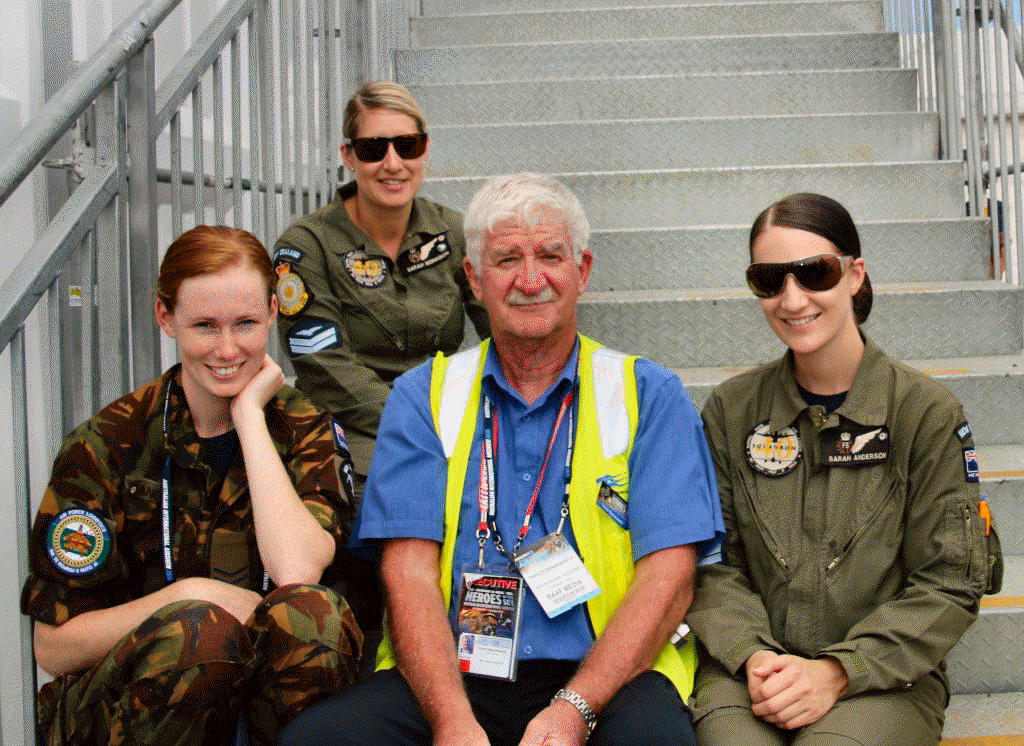
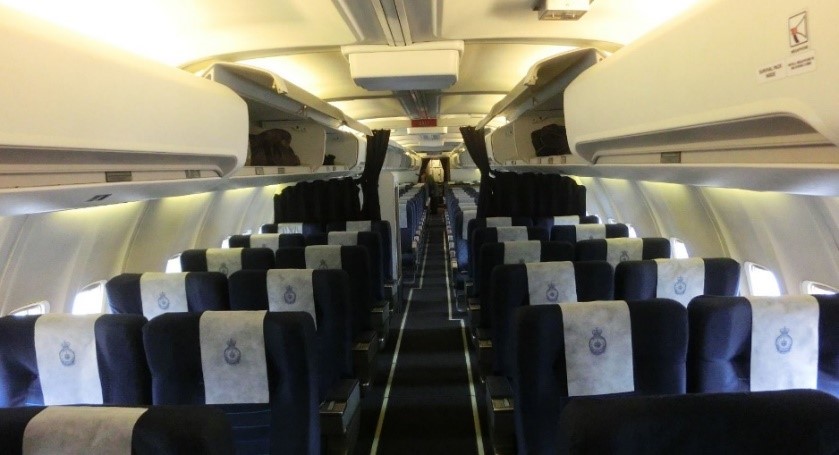
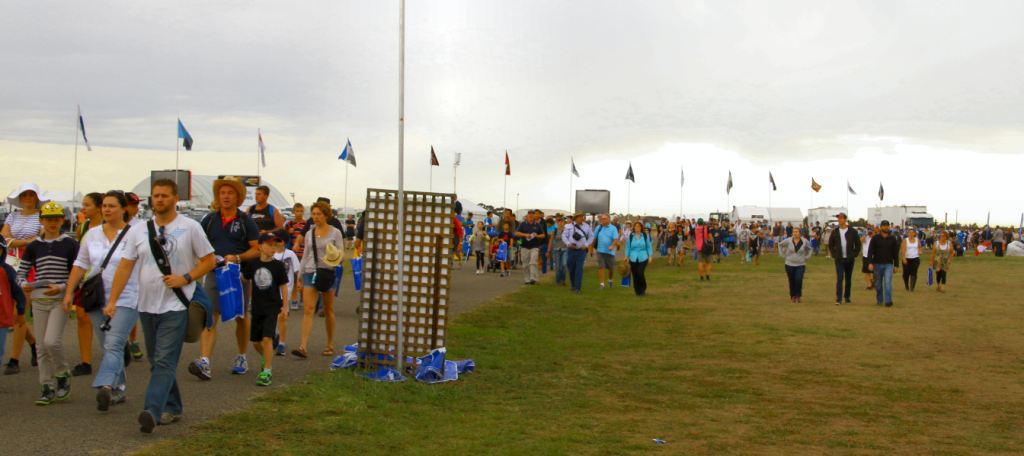


 Prominent
Australian businessman
Prominent
Australian businessman
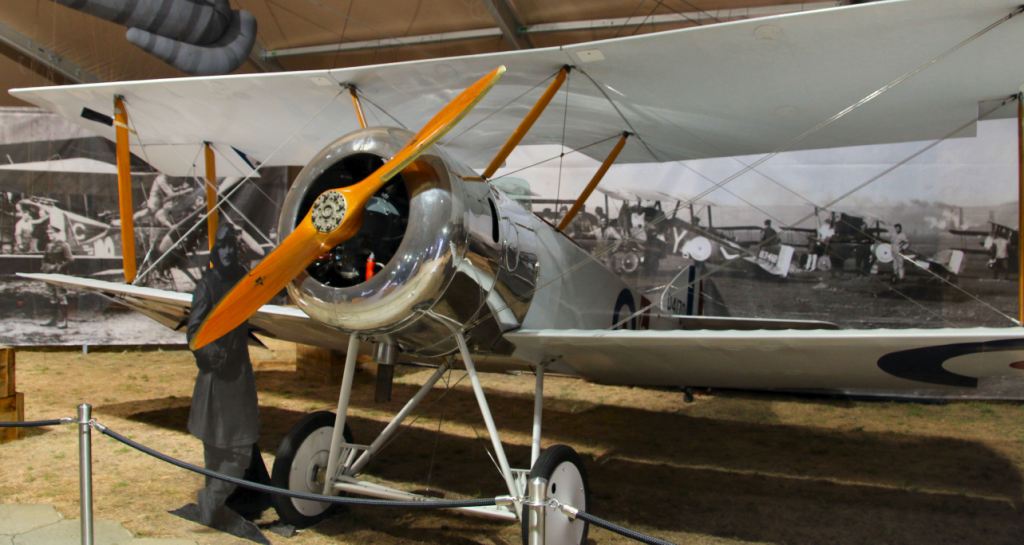
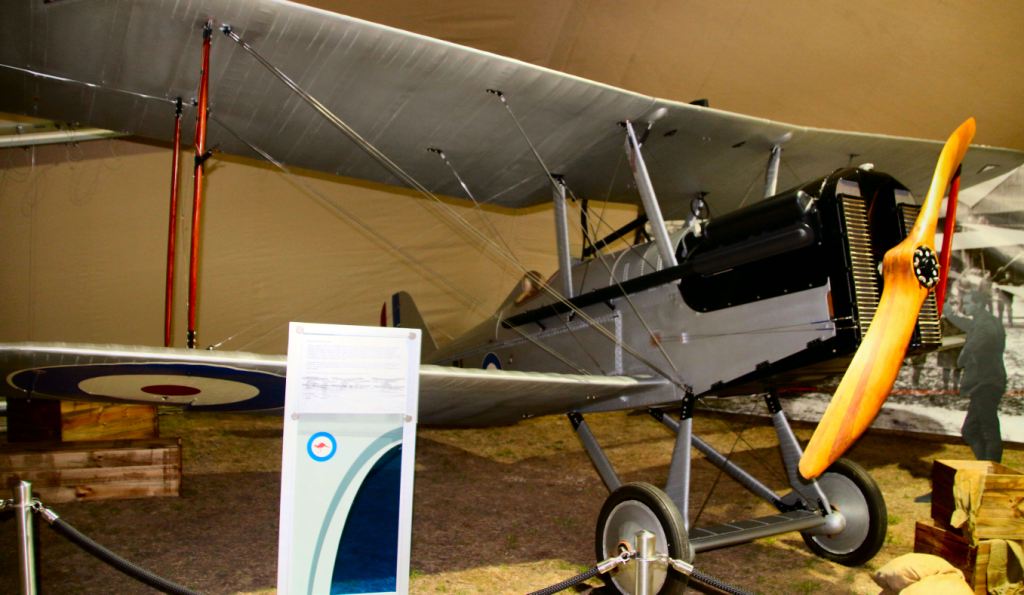
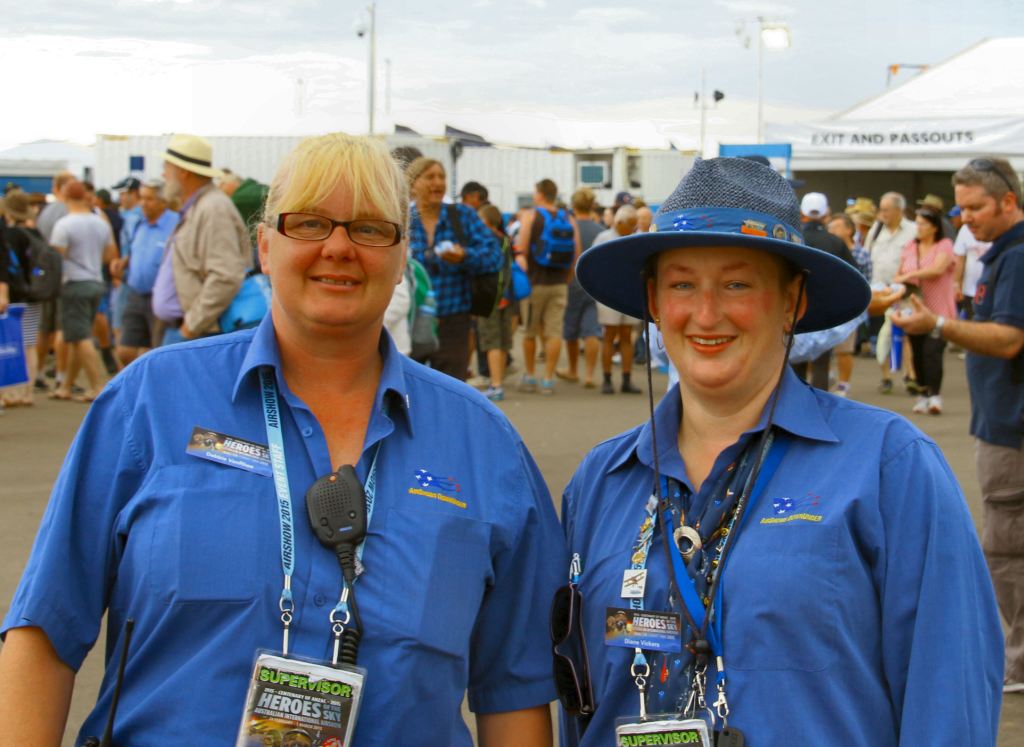
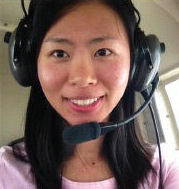 Volunteers, it does not cover travel to and from nor accommodation costs
for those that give of their time. These dedicated people travel from
all over Australian and some from abroad, all at their own expense.
Wendy Guan (right) a self-confessed aviation nut, travelled all the way
from her native China to be a part, but she, and all the other dedicated
volunteers say they wouldn’t miss it for quids and most intend coming
back in 2017.
Volunteers, it does not cover travel to and from nor accommodation costs
for those that give of their time. These dedicated people travel from
all over Australian and some from abroad, all at their own expense.
Wendy Guan (right) a self-confessed aviation nut, travelled all the way
from her native China to be a part, but she, and all the other dedicated
volunteers say they wouldn’t miss it for quids and most intend coming
back in 2017.